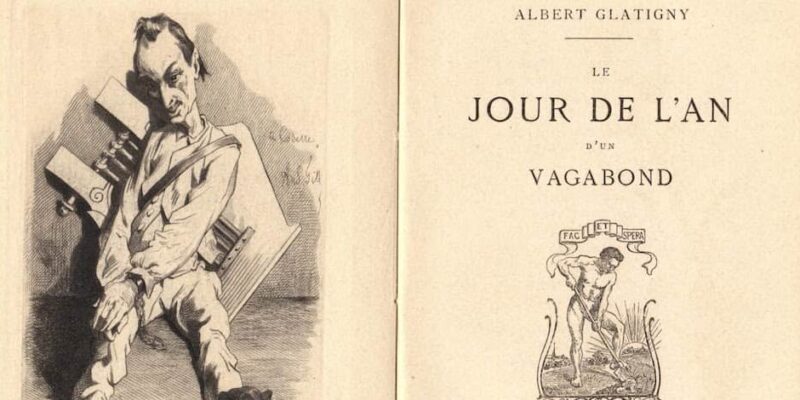We explain what Parnassianism is and its characteristics. In addition, its importance and main representatives.
What is Parnassianism?
Parnassianism was a unique French poetry movement that emerged around 1850 and was noted for the perfection of literary work, as opposed to the sentimentality of the romantic movement that preceded it. It was part of the "realistic age" that was also made up of two other schools or movements: realism and naturalism, which were not exclusive to poetry, but included prose.
Parnassianism was a reaction against subjectivism and spirituality, and was based on objectivity, materialism and science . The French Théophile Gautier and Leconte de Lisle were the founders of the literary movement.
The word Parnassianism is of Greek origin and refers to Mount Parnassus where the inspiring goddesses and muses were found.
Characteristics of Parnassianism
Parnassianism was characterized by:
- Being a literary movement typical of poetry .
- Being based on cold rationality that rejects the expression of feelings.
- To be a controlled art in all its forms, which rigorously sought perfection and beauty.
- Create a descriptive and pessimistic poetry that breaks with dreams, ideals and cultures, but without making mention of political or social movements.
- Being an art considered beautiful and perfect, without the need to be useful from morals , ideology or education .
Importance of Parnassianism
Parnassianism was important for its influence on later movements, such as modernism, which also manifested itself through poetry and was characterized by a narcissistic and aristocratic approach, with an aesthetic renewal of language .
The main contribution of Parnassianism was to consider art for art itself , and not for the subjectivity that each individual can decode in particular. It did not pursue a utility or did not seek to generate awareness from its manifestation, only to express the beauty and perfection of art itself.
Representatives of Parnassianism

Among the main representatives of Parnassianism are:
- Théodore de Banville (1823 - 1891). He was a French poet and playwright, considered one of the founders of Parnassianism. He stood out for works such as: "Brief treatise on French versification" of 1872 and "Western women and golden rhymes" of 1875.
- Charles Leconte de Lisle (1818 - 1894). He was a French poet recognized for his high level of stylistic correctness, also considered one of the founders of Parnassianism. He stood out for works such as: "Barbarian Poems" from 1862 and "Las erinias" from 1872.
- Théophile Gautier (1811-1872). He was a French poet, playwright, and journalist. He stood out for works such as: "The comedy of death" of 1838 and "Enamels and cameos" of 1852.
- Catulle Mendès (1841 - 1909). He was a French writer, historian and critic. He stood out for works such as: "Philoméla" of 1863 and "The embers of the ashtray" of 1900.
- Charles Baudelaire (1821-1867). He was a French poet, essayist, and art critic. He stood out for participating in "The Cursed Essays" of 1884, a book of essays by the poet of symbolism Paul Verlaine that mentions phrases or part of the work of various Parnassian authors. He stood out for works such as: "The flowers of evil" of 1840 and "Little poems in prose" of 1869.
- Louis Ménard (1822 - 1901). He was a French writer and poet who published the book "Prologue to a revolution" during the revolution of 1848 for which he was threatened and had to go into exile. He also stood out for his work "The reveries of a pagan mystic" of 1867.
- Albert Glatigny (1839-1873). He was a French poet and playwright. He stood out for works such as: "The golden arrows" of 1864 and "The red iron, new punishments" of 1870.
- José María Heredia (1842 - 1905). He was a poet and translator of Cuban origin. He was one of the main figures of Parnassianism and stood out for works such as: "Ode to Niagara" of 1824 and "Hymn of the exile" of 1827.
- François Coppée (1842 - 1908). He was a French poet, novelist, and playwright. He stood out for works such as: "The reliquary" of 1866 and "In prayer and in struggle" of 1901.
- León Dierx (1838 - 1912). He was a French poet who stood out for works such as: "Poems and poems" of 1864 and "The meeting" of 1875.
MA student of the TransAtlantic Masters program at UNC-Chapel Hill. Political Science with a focus on European Studies. Expressed ideas are open to revision. He not only covers Technical articles but also has skills in the fields of SEO, graphics, web development and coding. .
Leave a reply
Your email address will not be published. Required fields are marked *Recent post

Sport: What Is It, Types, Risks, Features, Characteristics and Examples

Dogs: Emergence, Features, Characteristics, Feeding and Breeds

Story: Definition, Elements, Structure, Features and Characteristics

